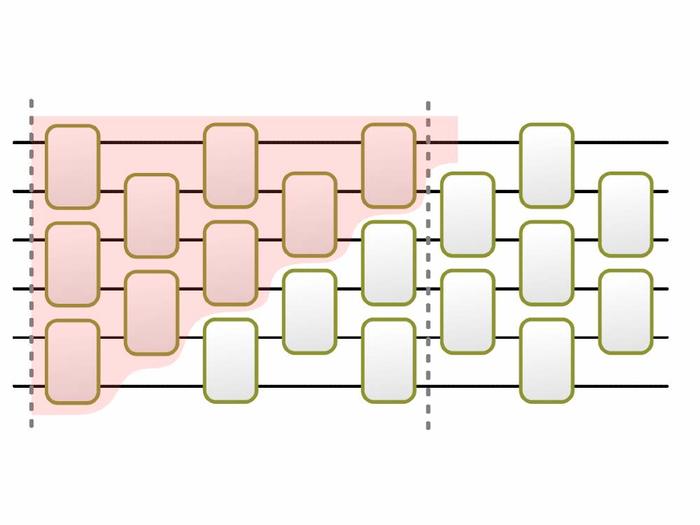Quantum complexity grows linearly for an exponentially long time
The Brown Susskind conjecture for random circuits postulates a linear growth of the circuit complexity, until a time exponential in the system size.
Image Credit: DOI 10.1038/s41567-022-01539-6
A new publication in "Nature Physics": Quantum physicists from Freie Universität Berlin and Harvard University, USA, solve Brown and Susskind's conjecture on the growth of complexity and thus find a way to prove an assumption that was previously difficult to tackle. For Jonas Haferkamp, who is the first author, the publication is a crowning achievement of his doctorate in the group of Prof. Dr. Jens Eisert.
News from Mar 28, 2022
"We have found a surprisingly simple solution to an important problem in physics," says Prof. Jens Eisert, a theoretical physicist at Freie Universität Berlin and Helmholtz-Zentrum Berlin. Purely analytically, by using only pencil and paper, Jonas Haferkamp, Philippe Faist, Naga Kothakonda, and Jens Eisert, together with Nicole Yunger Halpern (Harvard, now Maryland), have succeeded in proving a conjecture that has major implications for complex quantum many-body systems. "This plays a role, for example, when you want to describe the volume of black holes or even wormholes," explains Jonas Haferkamp, PhD student in the team of Eisert and first author of the paper.
Complex quantum many-body systems can be reconstructed by circuits of so-called quantum bits. The question is: How many elementary operations are needed to prepare the desired state? The minimum number of operations - the complexity of the system - seems to be always growing. However, it cannot be completely ruled out that there are "shortcuts," random circuits with much lower complexity than expected. Physicists Adam Brown and Leonard Susskind of Stanford University formulated this intuition as a mathematical conjecture: the quantum complexity of a many-body system should first grow linearly for astronomically long times and then remain in a state of maximum complexity for an even longer time.
The research team has now shown that the quantum complexity of random circuits does indeed increase linearly with time until it saturates at a time that is exponential to the system size. Such random circuits are a powerful model for the dynamics of many-body systems. "Our proof is a surprising combination of methods from geometry and those from quantum information theory. This new approach makes it possible to solve the conjecture for the vast majority of systems without having to tackle the notoriously difficult problem for individual states," says Haferkamp.
"Our results provide a solid basis for understanding the physical properties of chaotic quantum systems, from black holes to complex many-body systems," Eisert comments.
Keywords
- Brown Susskind
- circuit complexity
- complex quantum many-body systems
- quantum bits
- quantum complexity
- random circuits
- wormholes


